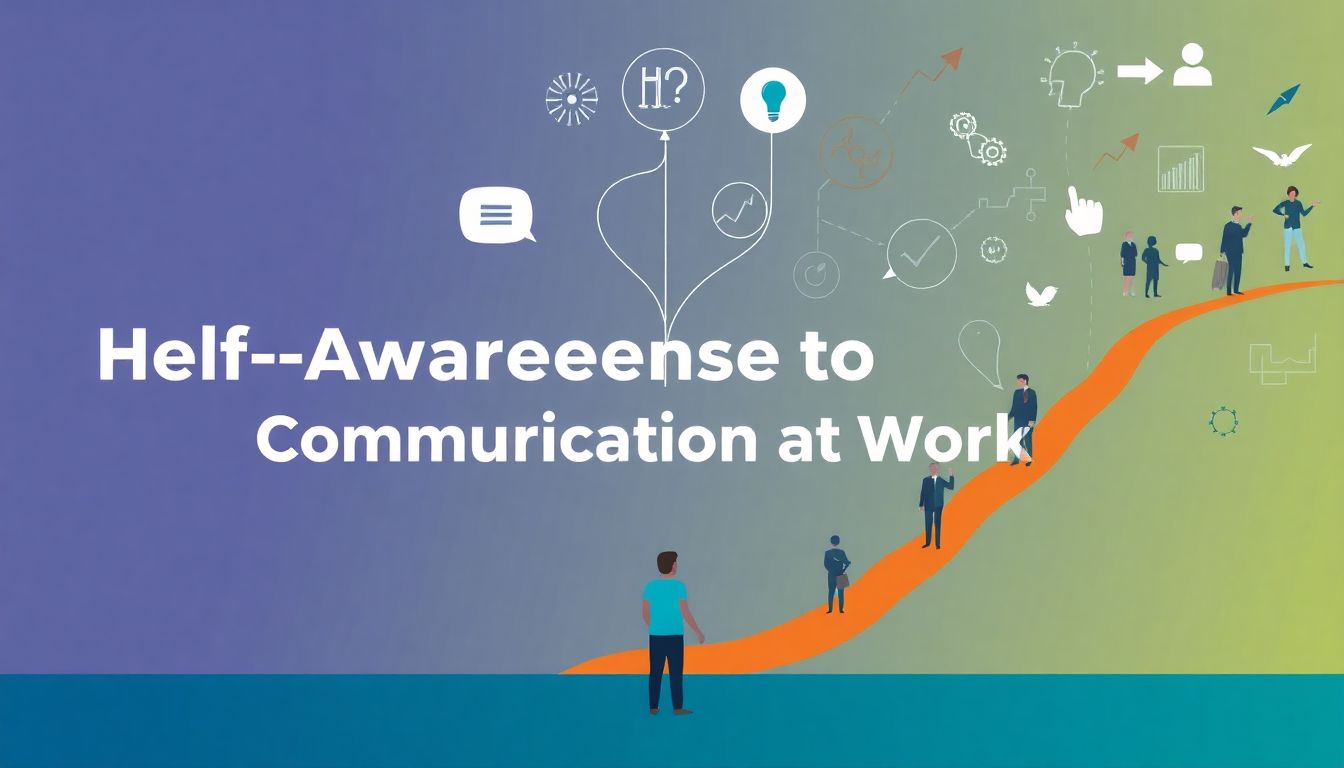Communication is one of the most valuable skills in any professional environment. Whether you’re writing an email, giving feedback, managing a team, or presenting an idea, how you express yourself matters. But here’s something many people overlook: effective communication starts with self-awareness.
When you understand your own communication style, emotions, and triggers, you’re better equipped to express yourself clearly, listen actively, and build stronger relationships at work. Let’s explore how self-awareness helps you communicate with more clarity, confidence, and connection.
Why Self-Awareness Affects Communication
Self-awareness is your ability to understand your inner world—your thoughts, emotions, motivations, strengths, and behaviors. This awareness directly influences how you communicate, because communication is not just about what you say—it’s about how you say it, why you say it, and how others perceive it.
Without self-awareness, you might:
- Interrupt others without noticing
- Avoid necessary conversations due to discomfort
- React defensively to feedback
- Misread tone or intent
- Struggle to express your thoughts clearly
With self-awareness, however, you can slow down, tune in, and choose your words and actions more intentionally.
Step 1: Understand Your Communication Style
Each person has a unique communication style. Some are direct, others are more reflective. Some are expressive and talkative, while others are more reserved.
Ask yourself:
- Do I speak more than I listen, or vice versa?
- Do I prefer written communication or face-to-face dialogue?
- How do I handle conflict—head-on, or do I avoid it?
You can also use assessments like DISC or MBTI to understand your natural tendencies. This helps you become more aware of your style and recognize how it lands with others.
Step 2: Notice Your Emotional Triggers
Emotions have a big impact on how we communicate. When you’re feeling stressed, disrespected, or misunderstood, you’re more likely to react rather than respond.
Common triggers at work include:
- Receiving critical feedback
- Feeling excluded from decisions
- Miscommunication in emails or meetings
- Pressure during deadlines
The key is to notice your reaction in real time. Pause, name the emotion, and ask yourself what it’s really about. This awareness helps you respond with more calm and clarity.
Step 3: Practice Active Listening
Self-aware professionals don’t just focus on what they want to say—they also know how to listen.
Active listening means:
- Being fully present in the conversation
- Avoiding the urge to interrupt or mentally prepare your reply
- Asking clarifying questions
- Reflecting back what you heard
When you’re aware of your tendency to dominate, zone out, or jump to conclusions, you can catch yourself and shift into genuine listening. This makes others feel seen and valued—and reduces misunderstandings.
Step 4: Manage Tone and Nonverbal Cues
Your words are only part of your message. Your tone of voice, facial expressions, and body language all influence how your message is received.
Self-awareness helps you:
- Notice if your tone sounds aggressive, rushed, or dismissive
- Be mindful of your posture and gestures
- Ensure your facial expression matches your intent
Sometimes, people think they’re being clear or kind—but their body language says otherwise. Self-awareness helps you align your words and presence.
Step 5: Adapt to Different Communication Styles
Not everyone communicates like you—and that’s okay. The most effective communicators adapt their approach to connect with different styles.
For example:
- With detail-oriented colleagues, provide more data
- With big-picture thinkers, focus on vision and outcomes
- With emotional communicators, build trust through empathy
- With direct communicators, be concise and to the point
Self-awareness helps you recognize your own style and respect the preferences of others, improving collaboration across diverse teams.
Step 6: Reflect After Key Conversations
Reflection is one of the most powerful self-awareness practices for communication.
After a meeting, ask yourself:
- What went well in that exchange?
- Did I listen fully or interrupt?
- How did I handle disagreement or stress?
- What could I do differently next time?
These insights help you refine your communication over time.
Step 7: Embrace Feedback as a Growth Tool
Feedback isn’t just something you give—it’s something you receive and learn from. Ask trusted colleagues how your communication comes across.
You might ask:
- “Do I come across as approachable?”
- “Do you feel heard when we talk?”
- “What’s one way I could communicate more effectively?”
This level of openness shows maturity and builds trust—and it often reveals blind spots that lead to meaningful improvement.
Self-Awareness Makes Your Message Stronger
At the end of the day, great communication is about connection. And connection starts with presence. Self-awareness gives you the ability to pause, reflect, and choose your words and actions with intention.
When you understand yourself better, you understand others better. And that’s the kind of communication that builds better teams, stronger relationships, and a more aligned, impactful career.
